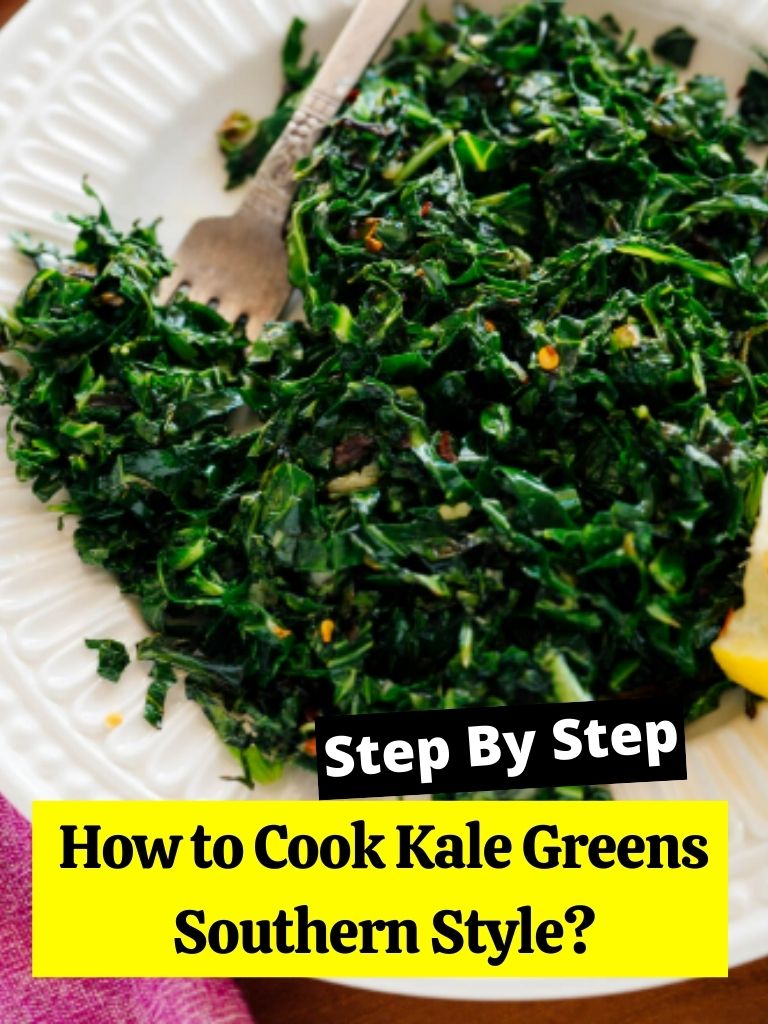Cooking kale greens southern style is a great way to enjoy this healthy vegetable. Kale is a cruciferous vegetable packed with antioxidants and vitamins, making it a great addition to your diet.
This blog post will show you how to cook kale greens southern style using simple ingredients. So, if you are looking for a tasty and healthy way to prepare kale, read on!
Table of Contents
How to cook kale greens in southern style?

Ingredients:
- 1 bunch of kale greens, washed and dried
- 1 tbsp. olive oil
- 1 tbsp. apple cider vinegar
- 1 tsp. salt
- 1/4 tsp. black pepper
Instructions:
1. preheat the oven to 375 degrees F.
2. In a large bowl, combine kale greens, olive oil, apple cider vinegar, salt, and black pepper.
3. Toss to coat evenly.
4. Spread the kale onto a baking sheet in a single layer.
5. Bake for 10-15 minutes, or until kale is crispy.
6. Enjoy!
FAQ’s:
How long should kale be cooked?
Kale greens should be cooked until they are wilted. This will take around 5-7 minutes.
Can you cook kale like you cook greens?
Yes, you can cook kale like you cook greens. Follow the same instructions for cooking greens, but replace the greens with kale. Kale is a hearty green that can withstand longer cooking times than most other greens.
Do you eat kale stems?
Well, some people do, and some people don’t. I’m not a fan of them, but my husband likes to eat them, so I usually cook them up with the kale leaves.
He takes the stems and eats them raw, but I like to cook them first. You can sauté them in some olive oil with a pinch of salt until they’re softened.
How do you make kale less chewy?
To make kale less chewy, you can blanch it in boiling water for a minute or two before using it in recipes, and this will help soften it up and make it more palatable.
What are the side effects of eating kale?
Kale is a leafy green vegetable that is high in antioxidants and vitamins. While kale is considered a healthy food, some side effects are associated with eating it. Kale can cause gas and bloating, especially if eaten in large quantities.
It can also cause constipation in some people. Additionally, kale contains oxalates, which can bind to calcium and other minerals in the body and reduce their absorption. For this reason, people with kidney problems should avoid eating kale.
How do you tenderize kale for cooking?
Kale is a nutrient-rich green that can be cooked in various ways. One popular way to cook kale is southern style, which involves simmering the greens in bacon grease or ham hocks until they are tender. Kale can also be boiled or steamed, but it will not be as tender as when cooked in the southern style.
Before cooking kale, you will need to remove the tough stems and leaves. This can be done quickly by holding the kale by the stem and pulling down on the leaves. You can then chop the kale leaves into the desired size.
To tenderize kale for cooking, you can soak it in salt water for 30 minutes or cook it with a few acidities, such as vinegar or lemon juice.
How long does kale last in the fridge?
Kale can last in the fridge for about five to seven days. Ensure to store it in a plastic bag or container so it does not dry out.
What are the benefits of eating kale?
Kale is an excellent source of vitamins A, C, and K and fibre and antioxidants. It has been shown to reduce the risk of cancer, heart disease, and other chronic health conditions.
How do I select the best kale for cooking?
When selecting kale for cooking, look for dark green leaves in colour and free from brown spots or wilting. The stems should be firm, and the leaves should be tender enough to eat.
What are some tips for cooking kale greens?
Some tips for cooking kale greens include: removing the tough stems before cooking, massaging the leaves with oil to make them more tender, and adding seasonings to taste. Kale can also be cooked in various ways, including sautéed, steamed, boiled, or baked.
Conclusion:
So there you have it, folks! Our guide on how to cook kale greens in southern style. We hope you enjoyed it and found it helpful. If you have any questions or comments, please feel free to leave them below. And as always, happy cooking!